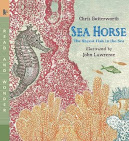“You cannot transmit wisdom and insight to another person. The seed is already there. A good teacher touches the seed, allowing it to wake up, to sprout, and to grow.” ~ Nhat Hanh
Connotation, imagery and symbol enrich a text by making words and images mean more than one thing. They invite students to consider the habitual in terms of the new and so are important to creative and critical thought. Figurative language has social consequences as it influences the ways we conceptualise people, information and ideas. Critical analysis brings to light these associations and strands of meaning. (K -12 English)
READ GROW INSPIRE allows for figurative language and the exploration of connotation, imagery and symbol. Think of the growing process with plants: from seed to seedling, to sprouting to a sapling and then to a tree. It starts with a seed! Brainstorm how many well known sayings, adages, aphorisms, proverbs etc that you can think of that have the word 'seed' in them. When you have a list hand them out to groups of students and see if they can say what they mean.
So many well known authors even have quotes that refer to seeds attributed to them.
• “Before the seed there comes the thought of bloom.” ~ E. B. White
• “Don’t judge each day by the harvest you reap but by the seeds you plant.” — Robert Louis Stevenson
• “I know it may seem small and insignificant, but it’s not about what it is, it’s about what it can become. That’s not a seed, any more than you’re just a boy.” ~ Dr. Seuss
• “Nature varies the seed according to the variety of the things she desires to produce in the world.” ~ Leonardo da Vinci
• “Each day of my life I am sowing seeds that one day I will harvest.” ~ Gautama Buddha
• “Knowledge cultivates your seeds and does not sow in your seeds.” ~ Khalil Gibran
• “Your thoughts are seeds, and the harvest you reap will depend on the seeds you plant.” ~ Rhonda Byrne
• “Flowers and fruit are only the beginning. In the seed lies the life and the future.” ~ Marion Zimmer Bradley
Traditional symbolic meanings for 'seeds' include: Potential, Trust, Hope, Nourishment, Sacred, Earthiness, Initiation, Reproduction, Cycles, Time, Provision. Did you find these symbols in what you brainstormed?
Probably the most obvious seed as imagery or symbol story is the Parable of the Seeds from the bible. If you read the bible story or a picture book version of it such as The Tiny Seed by Katie Warner to your class you can explain that a parable is a type of narrative with an emotive or moral significance which initiates comparison. If you then go on to read The Tiny Seed by Eric Carle your astute students will recognise very quickly that this story is just like the parable. Seeds fall where it is difficult for them to grow.
Another seed falls into the ocean.
A hot dry desert is too much for one seed. Meanwhile, the tiny seed is pushed on with the others.
When the seeds fall to the ground, one is eaten, but not the tiny seed. It is so small. It isn't seen. If you stop here while reading, the students will be able to tell you what happens next.
Yes this story elucidates the plant cycle from seed to flower, but when compared to another book such as A Seed Grows suchby Antionette Portis, it is easy to show your students how the imagery works. You could also compare it to It Starts with a Seed by Laura Knowles.
If you read The Seedling that Didn't Want to Grow by Britta Teckentrup you will see that it is early spring and below the earth's surface seeds are just starting to sprout. All except for one seedling, who isn't quite ready. As most of the seeds transform into strong flowers, they block out the sun from the one left behind. But the little seedling persists, twisting and turning until, with the help of bird and insect friends, it finds its own place to grow and blossom. This story about the resilience and the will to grow that exists in the natural world can be seen as a metaphor for late bloomers who blossom and thrive with the support and love of others.














































